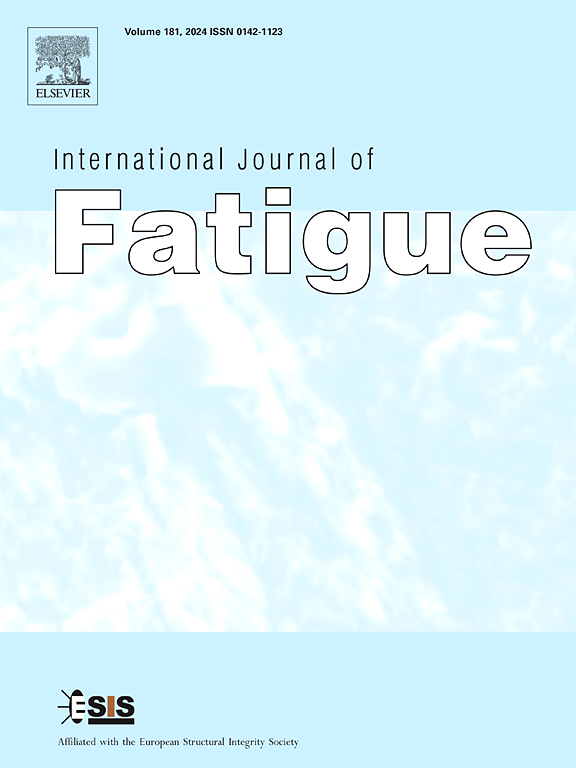Study of LSTM-based constitutive modeling for coupled multimodal microstructure time-series damage in DZ125 superalloy
IF 5.7
2区 材料科学
Q1 ENGINEERING, MECHANICAL
引用次数: 0
Abstract
A novel modeling method for DZ125 superalloy has been proposed, integrating a long short-term memory (LSTM) network into the Chaboche unified viscoplasticity constitutive model. Initially, the modified Chaboche constitutive model, incorporating the multimodal microstructure coupled with time-series damage, was developed and implemented using the UMAT subroutine in ABAQUS. Subsequently, damage parameters were determined based on the extraction of three microstructural features, enabling the establishment of an LSTM network for predicting the damage variable, which was then embedded into the UMAT subroutine. Finally, the comparative analysis indicated that the LSTM model achieved nearly the highest prediction accuracy and shortest calculation time, while the UMAT-LSTM model uniquely enabled the prediction of mechanical behavior responses at any given service time. The UMAT-LSTM model developed in this study achieved cross-platform integration, effectively combining the embedded LSTM network’s data-driven learning capability with the constitutive model’s physical mechanism. This approach provides a cost-effective and time-efficient nondestructive solution for predicting the mechanical properties of hot section components.

基于lstm的DZ125高温合金耦合多模态显微组织时间序列损伤本构建模研究
提出了一种新的DZ125高温合金建模方法,将长短期记忆(LSTM)网络集成到Chaboche统一粘塑性本构模型中。首先,利用ABAQUS中的UMAT子程序开发并实现了包含多模态微观结构和时间序列损伤的改进的Chaboche本构模型。随后,基于三个微观结构特征的提取确定损伤参数,建立LSTM网络预测损伤变量,然后将其嵌入到UMAT子程序中。最后,对比分析表明,LSTM模型的预测精度最高,计算时间最短,而UMAT-LSTM模型能够预测任意给定服役时间下的力学行为响应。本研究开发的UMAT-LSTM模型实现了跨平台集成,有效地将嵌入式LSTM网络的数据驱动学习能力与本构模型的物理机制相结合。该方法为热截面构件的力学性能预测提供了一种经济、省时的非破坏性解决方案。
本文章由计算机程序翻译,如有差异,请以英文原文为准。
求助全文
约1分钟内获得全文
求助全文
来源期刊

International Journal of Fatigue
工程技术-材料科学:综合
CiteScore
10.70
自引率
21.70%
发文量
619
审稿时长
58 days
期刊介绍:
Typical subjects discussed in International Journal of Fatigue address:
Novel fatigue testing and characterization methods (new kinds of fatigue tests, critical evaluation of existing methods, in situ measurement of fatigue degradation, non-contact field measurements)
Multiaxial fatigue and complex loading effects of materials and structures, exploring state-of-the-art concepts in degradation under cyclic loading
Fatigue in the very high cycle regime, including failure mode transitions from surface to subsurface, effects of surface treatment, processing, and loading conditions
Modeling (including degradation processes and related driving forces, multiscale/multi-resolution methods, computational hierarchical and concurrent methods for coupled component and material responses, novel methods for notch root analysis, fracture mechanics, damage mechanics, crack growth kinetics, life prediction and durability, and prediction of stochastic fatigue behavior reflecting microstructure and service conditions)
Models for early stages of fatigue crack formation and growth that explicitly consider microstructure and relevant materials science aspects
Understanding the influence or manufacturing and processing route on fatigue degradation, and embedding this understanding in more predictive schemes for mitigation and design against fatigue
Prognosis and damage state awareness (including sensors, monitoring, methodology, interactive control, accelerated methods, data interpretation)
Applications of technologies associated with fatigue and their implications for structural integrity and reliability. This includes issues related to design, operation and maintenance, i.e., life cycle engineering
Smart materials and structures that can sense and mitigate fatigue degradation
Fatigue of devices and structures at small scales, including effects of process route and surfaces/interfaces.
 求助内容:
求助内容: 应助结果提醒方式:
应助结果提醒方式:


